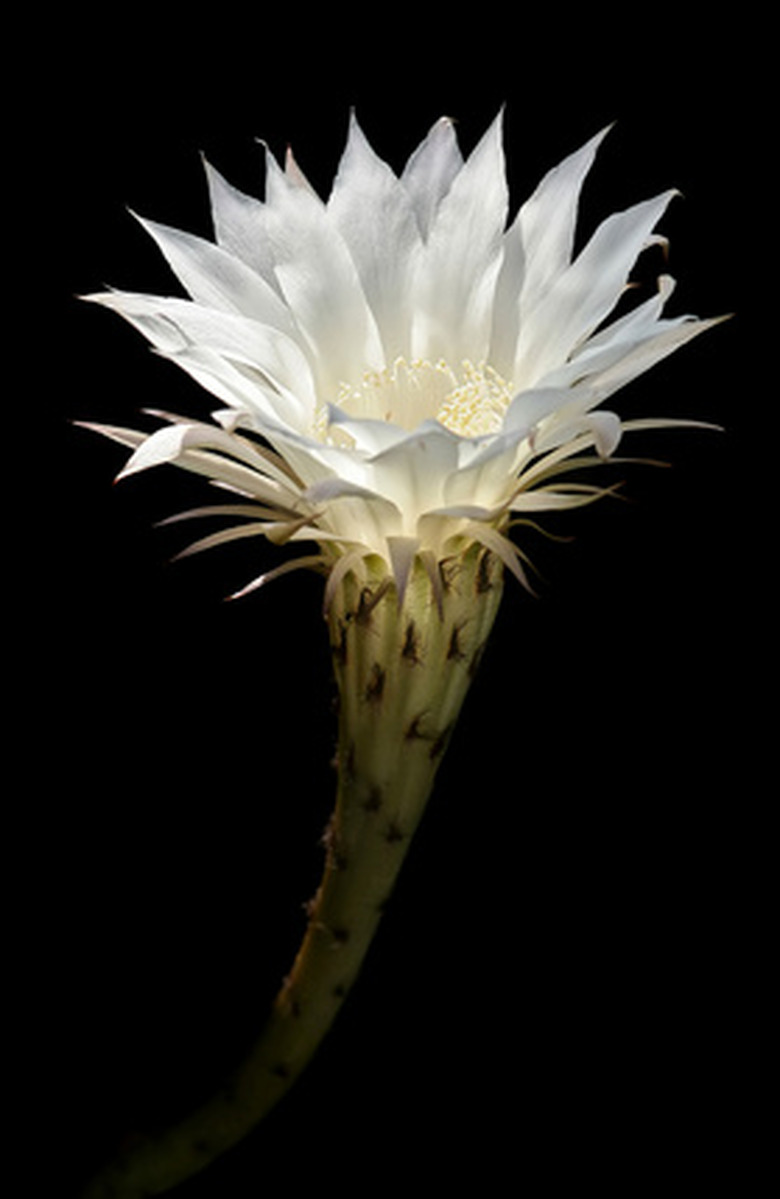How To Take Care Of Night Blooming Cereus
The night blooming cereus plant is a flowering evergreen that–as the name impliess–blooms only at night. Blooms vary in size and shape, but all species of cereus bloom nocturnally, only twice per year. According to gardening expert Jack Eden, the plant will last for several years and bloom biannually if you give it proper care.
Step 1
Prune the night blooming cereus plant during the first week of March. Use gardening snips or scissors and cut the plant back severely, so that each of the stems is just 6 inches long. Cereus plants produce blooms on new growth, and pruning stimulates the plant to produce new growth.
Step 2
Water the plant thoroughly after pruning back the plant, and allow the excess water to drain away. Start using a 15-30-15 fertilizer immediately after pruning. Thereafter, water the plant when the surface of the soil feels dry to the touch. Fertilize the plant with this fertilizer every four weeks until September.
- The night blooming cereus plant is a flowering evergreen that–as the name impliess–blooms only at night.
Step 3
Keep the cereus in bright, indirect light. The plant needs at least eight hours of indirect light per day.
Step 4
Move the cereus outside into full sun when the daytime temperatures reach the low 80's. When the daytime temperatures reach the 90's, move the plant into partial shade. Anchor stems to a trellis using cotton twine to prevent the plant from vining outward. Check the soil surface every morning; if the soil feels dry, water the plant.
Step 5
Watch for buds to form within 48 hours after a new moon. Buds form very rapidly within the span of a day, and the flower opens at approximately 9 that night. The flowers disintegrate before sunrise the following morning.
- Keep the cereus in bright, indirect light.
- Buds form very rapidly within the span of a day, and the flower opens at approximately 9 that night.
Step 6
Move the plant to a shady area in September. Treat the plant for insects if necessary.
Step 7
Move the plant indoors on or around Halloween, and allow it to dry out for the first week of November. Place the plant in a south or west window. Water it every three or four days with tepid water; this will keep the root system alive even though some of the stems will die back. Continue this maintenance until March, at which time you will start the care cycle all over again.
Things Needed
- Cereus plant
- Gardening snips or scissors
